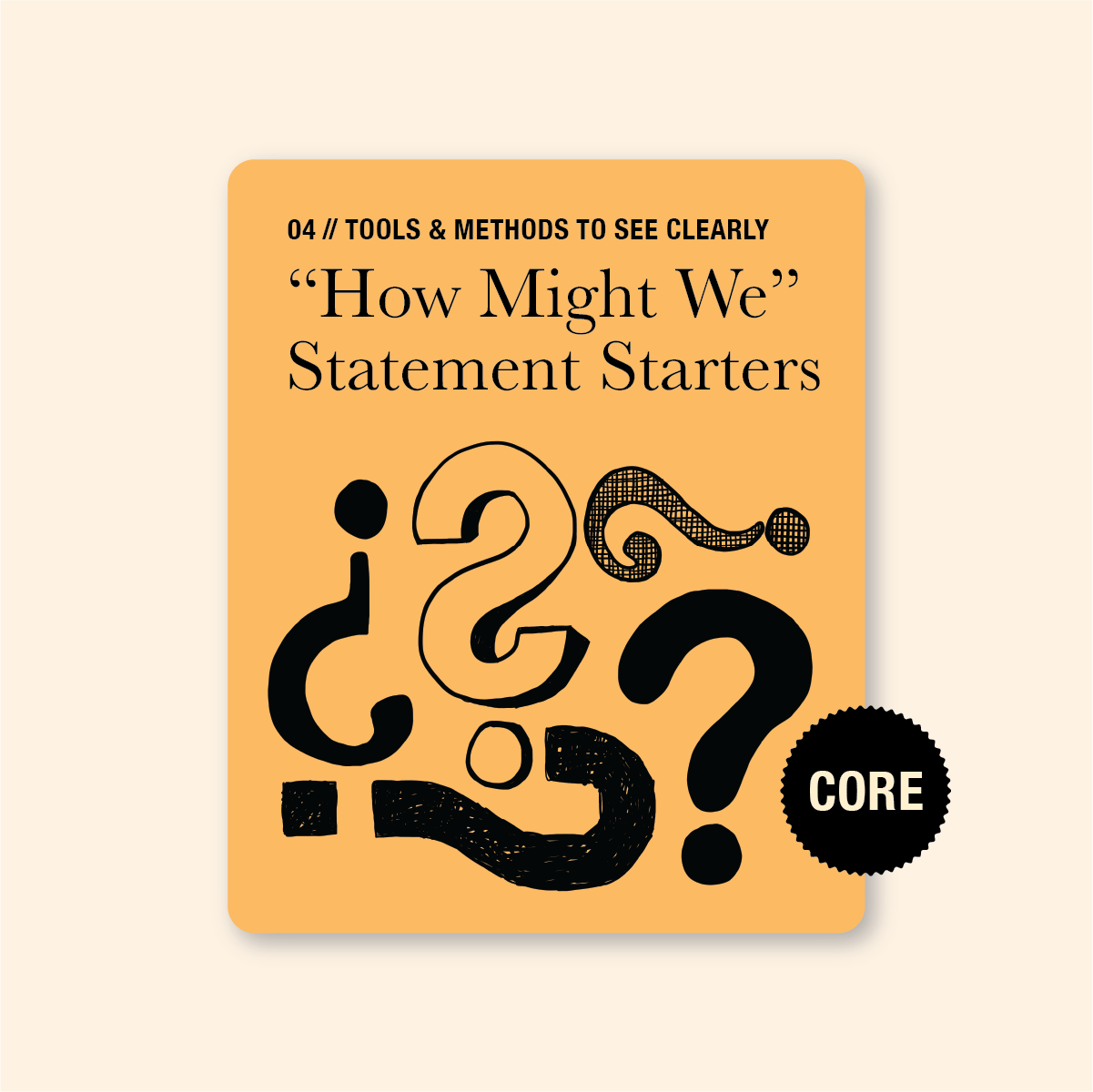"How Might We" Statement Starters
A Core Method to Turn Problems into Possibilities
“How Might We” (HMW) is a framing technique commonly used in design and innovation to turn problems or insights into open-ended questions that:
Encourage exploration of new possibilities
Invite collaboration
Reframe perspectives
Why this Works for Families
It is common for many of us to get caught in binary thinking, where we see only two extreme options, and rarely pause to explore the possibilities in between.
“If I don’t punish him, he’s not going to learn”
“If she doesn’t hang out with the right people, she’s gonna get into trouble.”
This pattern can shut down communication and leave children or partners feeling judged, blamed, or ‘not good enough’. By reframing challenges with HMW questions, we:
Shift from judgement or blame to curiosity
See more possibilities beyond either/or options
Create a safe space where everyone contributes
Put ourselves in an active role towards solutions
This reduces resistance and builds ownership and creativity.
What You’ll Need
All items optional. Mindset matters more than materials.
But if you are using this as part of a family workshop, you’ll need:
Plain paper / Sticky notes
Pens or markers
Quick Guide with Examples
Goal: Shift from finger-pointing to collaborative problem solving.
Method:
Start by identifying the challenge objectively
Add ‘How Might We…’.
Examples:
“You have been late for school twice this week. How might we make the mornings less stressful and hectic so you can get to school on time?”
“I notice we all have been spending quite a bit of time on our screens on weekday evenings. How might we take control of our screen time usage so it feels more balanced?”
Notice how the ‘we’ in the question instantly puts us on the same team, no matter who had started the problem.
Tips for Parents:
Practice in everyday moments. The more we use it, the more natural it feels for us to shift from blame to collaborative problem solving.
Reward new perspectives, not quality of ideas (yet)
Celebrate every contribution even the ‘silly’ suggestions to keep the momentum going.
Recap:
How Might We is a quick, effective way to reframe challenges at home. Instead of reacting with blame or control, we invite curiosity, teamwork and shared problem-solving.




I love this language! Thank you Evonne 🧡 going to try it with the kids this week 📝